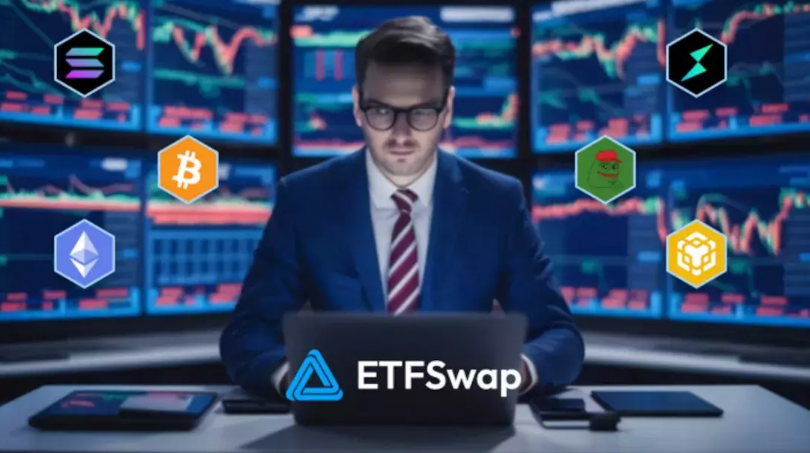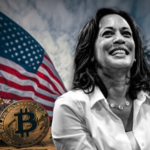Introduction:
The investment landscape is evolving rapidly, and one of the most intriguing developments in recent years has been the rise of ETF swaps. These financial instruments have garnered attention from both seasoned investors and newcomers alike. But what exactly are etfswap, and why should you care?
As traditional investing methods face challenges, etfswap offer an innovative approach that can provide flexibility and efficiency. Whether you’re looking to hedge your portfolio or gain exposure to specific markets, understanding these tools could be a game changer for your strategy. Let’s dive into the world of etfswap and explore how they might shape the future of modern investing.
Understanding ETF Swaps
ETF swaps are essentially derivative contracts that allow investors to exchange the performance of one asset for another. Instead of directly buying or selling an ETF, you enter into a swap agreement with a counterparty.
In these arrangements, one party pays returns based on the performance of an underlying index or asset. In return, they receive fixed payments or returns linked to their chosen assets from the other side. This creates opportunities without requiring direct ownership of the ETFs involved.
The appeal lies in flexibility and enhanced liquidity. Investors can gain exposure to various markets more efficiently while possibly reducing transaction costs associated with traditional trading methods.
Understanding how these swaps work is crucial before diving deeper into their benefits and risks within your investment strategy. With evolving financial practices, mastering this concept might just open new doors for savvy investors looking to navigate complex markets effectively.
Advantages of Using ETF Swaps in Investing
ETF swaps offer distinct advantages that can enhance an investor’s strategy. One key benefit is access to a wider range of underlying assets. By utilizing swaps, investors can tap into markets or sectors that might otherwise be difficult to reach.
Cost efficiency is another factor worth mentioning. Swaps often come with lower transaction costs compared to traditional ETF transactions. This can lead to improved overall returns, particularly for frequent traders.
Moreover, ETF swaps provide flexibility in managing exposure and risk. They allow investors to adjust their positions quickly without the need for physical asset ownership. This agility is crucial in today’s fast-paced market environment.
Tax efficiency also plays a role here. Swapping allows for deferral of capital gains taxes until the swap position is unwound, potentially leading to better after-tax returns over time.
These advantages make ETF swaps an attractive option for savvy investors looking to optimize their portfolios.
Risks Involved in ETF Swaps
ETF swaps can offer tantalizing benefits, but they are not without risks. One major concern is counterparty risk. This arises when the entity on the other side of the swap fails to meet its obligations. Such an event can lead to financial losses for investors.
Market volatility poses another challenge. Swaps may react differently compared to traditional etfswap during turbulent market conditions, potentially amplifying losses or gains unpredictably.
Liquidity risk also plays a role. Not all swaps have deep markets, making it tough for investors to exit positions without incurring significant costs.
Tax implications can be complex and vary by jurisdiction. Investors might face unexpected tax liabilities that could diminish returns over time.
Each of these factors highlights why understanding ETF swaps requires thorough research and careful consideration before diving in.
Impact of Technology on ETF Swaps
Technology is reshaping the landscape of etfswap. Advanced algorithms and high-speed trading platforms enable investors to execute trades with unprecedented efficiency. This speed reduces transaction costs, making it more attractive for institutional players.
Blockchain technology also plays a pivotal role in enhancing transparency. With its decentralized nature, blockchain can provide real-time tracking of swap transactions, minimizing counterparty risk. Investors gain greater confidence knowing that their trades are secure and verifiable.
Furthermore, artificial intelligence is improving decision-making in this space. AI analyzes vast amounts of data quickly, helping traders identify optimal timing and pricing for their ETF swaps. These innovations empower investors to make informed choices that were once challenging to achieve.
As technology progresses, so do the possibilities within the ETF swap market. The combination of speed, security, and analytical prowess creates an environment ripe for growth and innovation in modern investing strategies.
The Role of Regulations in ETF Swap Market
Regulations play a crucial role in the ETF swap market. They ensure transparency and protect investors from potential risks associated with these financial instruments.
Authorities like the SEC monitor trading practices, ensuring compliance with established guidelines. This oversight helps to maintain fair pricing and reduces manipulation risks.
Additionally, regulations foster innovation by establishing a framework for new products. As more sophisticated ETFs emerge, regulatory bodies adapt their rules to accommodate advancements while safeguarding investor interests.
Market participants must navigate complex regulatory landscapes. Understanding the legal requirements can be daunting but is essential for successful navigation of ETF swaps.
Furthermore, international regulations influence local markets as global participation increases. Cross-border activities introduce additional layers of complexity that require attention to diverse legal standards and practices.
Case Studies: Successful Use of ETF Swaps
Several high-profile investors have effectively utilized ETF swaps to enhance their portfolios. One notable case is a large institutional investor that leveraged these swaps to gain exposure to emerging markets without the burden of direct ownership. By utilizing an ETF swap, they managed to sidestep various operational challenges and costs tied to foreign investments.
Another example comes from a hedge fund that aimed for tactical asset allocation. They employed ETF swaps for quick adjustments in response to market volatility. This strategy allowed them immediate rebalancing capabilities while maintaining liquidity.
Moreover, mutual funds have increasingly turned toward ETF swaps as well. A prominent fund manager used these instruments to implement strategies around sector rotation, achieving targeted exposures with improved risk management.
These cases illustrate the versatility of ETF swaps in different investing scenarios, showcasing how adaptive strategies can be implemented through innovative financial instruments.
Conclusion:
The world of investing is evolving rapidly, and ETF swaps are at the forefront of this transformation. With their ability to offer substantial advantages, such as tax efficiency and flexibility, they have caught the attention of both institutional investors and individual traders.
However, like any financial instrument, ETF swaps come with inherent risks that cannot be overlooked. Understanding these challenges is crucial for anyone considering entering this market. Technology continues to play a significant role in enhancing the mechanisms behind ETF swaps, making them more accessible and efficient than ever before.
Regulatory frameworks also shape how ETF swaps operate within different jurisdictions. Keeping abreast of these changes can help investors make informed decisions about utilizing ETFs effectively in their portfolios.
As we look at successful case studies showcasing the application of ETF swaps by various entities, it becomes evident that strategic use can lead to favorable outcomes. The lessons learned from these instances may guide future investment strategies involving ETFs.
Embracing the potential while remaining cautious about known pitfalls will define how individuals navigate this innovative aspect of modern investing. The journey into understanding etfswap is just beginning; those who engage thoughtfully will likely find opportunities amid the complexities ahead.


